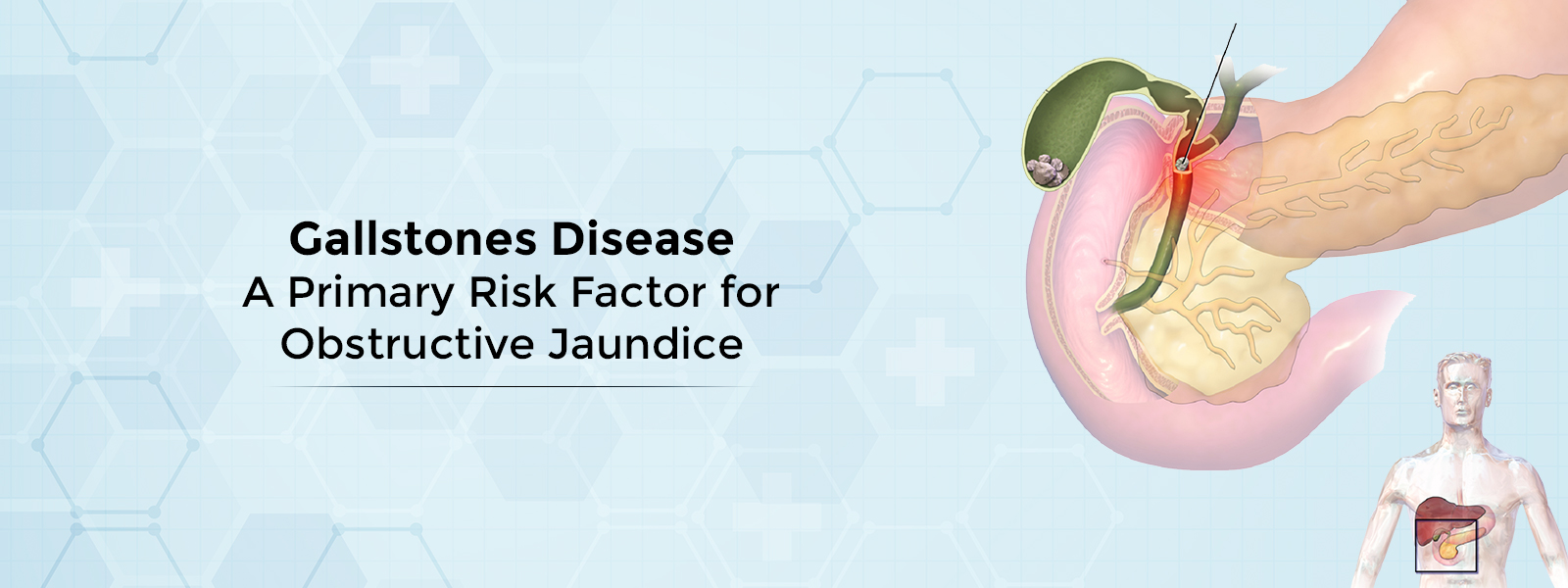Gallstones Disease: A Primary Risk Factor for Obstructive Jaundice

Gallstones are referred to as small stones, made up of cholesterol, or are hardened deposits of digestive fluids that are formed in the gallbladder. In most of the cases, no major symptoms are observed and it needs no treatment. But if the gallstones become trapped in an opening duct such as the bile duct inside the gallbladder, the patient might experience an intense sudden pain that lasts up to hours. Gallbladder removal surgery such as Cholecystectomy is one of the most widely performed laparoscopic procedures to treat gallstones. The laparoscopic approach is adopted due to its benefits such as shorter hospital stay, less postoperative pain, early recovery, and return to work. However stones in the bile duct and liver can be treated by endoscopy without any surgery. ERCP or endoscopic retrograde cholangio pancreatography is an endoscopic procedure to treat stones of the biliary system.
Obstructive Jaundice: An Overview
When the gallstones pass out the gallbladder into the bile duct, it results in the blockage of the bile flow. As a result, the gallbladder becomes inflamed which causes obstruction in the bile duct and leads to a condition known as obstructive jaundice. The excess bile and the by-products are redirected in the blood resulting in incomplete bile excretion from the body leading to severe infection and a life threatening condition known as cholangitis. The major symptoms of the disease include yellowish eyes and skin, fever, abdominal pain, nausea, vomiting, etc. Although the condition can arise due to any obstruction leading to blockage and flow of bile from the liver, gallstones are one of the primary reasons for the occurrence of the disease. If the condition worsens, it may cause severe liver infection and gallbladder damage.
Risk Factors and Complications
Several risk factors can raise the risk for the development of the disease. Apart from Gallstones, the other risk factors include any previous abdominal injury, tumours in the area of the common bile duct, and pancreatic cancer. Many complications are also associated with the disease including Cirrhosis (scarring of the liver), digestive problems, adverse impacts during the treatment, Coagulopathy (a kind of blood clotting disorder), Cancerous tumours, liver failure, and Malabsorption syndrome (a type of disorder in which the body is unable to absorb nutrients from the food). Gastroenterology experts recommend a comprehensive treatment approach depending on the condition of the patient and the health outcomes to be achieved.
Treatment Approach
Clinical evaluations have been conducted to find out the root cause of the disease. In less severe patients, biliary infections can be cured with medications like antibiotics and intravenous fluids. On the other hand, critically ill patients are advised to undergo endoscopic removal of the obstruction. Endoscopic Retrograde Cholangiopancreatography (ERCP) is one of the commonly adopted procedures performed to treat bile duct problems which cause diseases like obstructive jaundice. One of the key benefits of this procedure is only the gallstones present in the bile duct can be removed without surgery with great accuracy, a shorter hospital stay and no abdominal surgery. Also, if any stones are present in the gallbladder surgical techniques like laparoscopic cholecystectomy are applied to remove gallstones. SR Kalla Hospital has a team of expert intervention gastroenterologist and laparoscopic surgeons who have successfully performed ERCP procedures and treated patients suffering from gallstones and obstructive jaundice